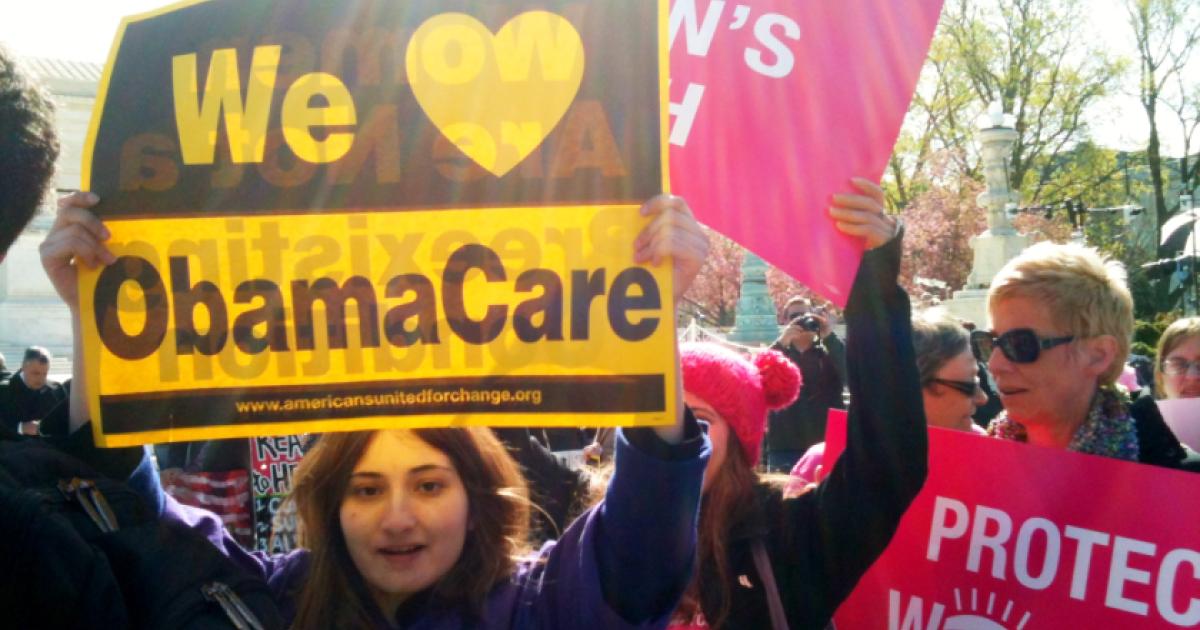- Law & Policy
- Politics, Institutions, and Public Opinion
Back in 2010, President Barack Obama and the Democratic Congress took the wrong fork in the road to health care reform. To be sure, the case for some reform was very strong, given that the mixed health care system in the United States provided inferior health care at premium prices for large portions of the population. But identifying a problem does not point the way to the necessary cure. What is needed is a clear theory of what has gone wrong and why.
In this regard, there were two diametrically opposed paths for reform. The first was to double down on failed regulatory and subsidy strategies. The second was to deregulate in an effort to unleash market forces to meet the strong and persistent demand for health care services. Unfortunately, in 2010, the road taken was the former: double down on combining government regulation with government subsidy.
The results are now clear. The Affordable Care Act has done nothing to unravel the past mistakes that in large measure were (and still are) attributable to excessive regulation and transfer payments. To give but one example, the voluntary coverage supplied by employer plans has dipped sharply from about 60 percent in 1980 to 50 percent in 2010, which on an employment base of 150 million workers translates into a 15 million increase in the number of uninsured persons in the United States.
It would be very difficult indeed to attribute this decline in health care coverage to some hidden form of market failure. What reason is there to think that employers have become more stingy, or employees more indifferent to their health care needs over the last 35 years?
In market settings the usual response to changes in technology and cost is to alter the coverage provisions, the price provisions, or both. Generally, so long as there are gains from trade, these incremental adjustments minimize the loss from adverse developments, and increase the gains from favorable ones. Given the massively improved technologies over the past two generations and an aging population, the proper prediction 30 years ago was that employers should have increased the level of health care coverage, not reduced it.
So we have to look elsewhere for the culprit, and that place is the regulatory state. One key feature of the Affordable Care Act was its ambition. The sign of a good health care plan, we were told, was one that covered all persons from the full range of adverse health events. The new deal was that the state mandates, of which there were hundreds, put to the employer this unhappy choice: either increase the benefit coverage of your plans or exit the markets. The implicit subtext is that employers would choose the former so that reformers could promise an ideal world in which coverage increased while costs remained about constant.
But the actual response proved otherwise. Employees will resist paying for plans that make them pay for a set of benefits that they don’t want to have, whether they be annual tests, annual physicals, or specialized coverage for alcoholism and psychological illnesses. In some cases, the increased costs will not result in coverage termination, but will only reduce the net gains that employers and employees can share from their previous policies. But as the mandates continue to pile on, the logic starts to shift. Now the extra coverage can be the straw that breaks the camel’s back, so that both sides now prefer less health care coverage and higher wages, which is what the market has given us for over 30 years.
Given this pattern, the correct approach in 2010 was to remove the obstacles to more effective market participation. It is very cheap to repeal legislation that does not make sense economically, including those pesky multiple mandates at the state level. By the same token, it is also cheap and easy to remove long-standing barriers to competitive markets, so as to relax licensing laws, such that physicians in good standing, say, in New York, can practice medicine without having to go through an onerous relicensing process in, say, Florida or California. The same can be said about barriers that prevent insurance companies headquartered in one state from selling their products in another, or removing the barriers to the corporate practice of medicine.
But such was not to be. Instead, the ACA introduced a bewildering set of mandates and taxes that have become increasingly difficult to undo over time. The most notorious of those is perhaps the special 2.3 percent excise tax on the sales of a wide array of medical devices used to help fund the program. Taxes like this should be dead-on-arrival, because the sound principles of political economy point to this enduring principle: the right balance between revenues and expenditures will never take place if special taxes on particular activities are deployed to fund programs that purport to provide widespread public benefits. The ability of powerful factions to force costs on to some small market segment allow them to externalize the costs of the programs, which in turn will lead to a systematic overfunding of unwise programs.
The point here should rise, I believe, to the level of a constitutional scrutiny, because there is no reason whatsoever to have to go through the same fundamental debate on an ad hoc basis. But weak judicial controls over taxation have blocked that sensible improvement. So it is back to the political process, where the repeal of this tax, for which there is substantial bipartisan support, should be high on the agenda of the new Congress.
The question of what to do, however, gets harder in other cases, which leads to the problem of the second-best that now faces Congress on the key question of how far employee coverage should extend under the ACA. Once again, it is easy in my view to identify the first best solution to this problem. Never have notches in the coverage system, such that people below a certain level are out while those above that level are in. The argument against notches does not in principle depend on where that discontinuity is placed. Instead it depends simply on the fact that we have one at all. The dangers of these discontinuities are two.
The first is that it is often hard to classify people on one side of the line or the other. The ACA right now says that the employer mandate does not apply to those workers who are employed for less than 30 hours per week. But many workers today work irregular schedules. So it is an open question of what should be done with workers who may do 42 hours in one week but only 20 in the next. This pattern is very common not only for low-income workers in, for example, the restaurant business, but also for seasonal workers who may have several different jobs, without a regular work week. A rule that required, for example, an employer to pay a fixed fee into a health care fund for each hour worked by an employee would be a lot easier to administer than one which has to negotiate these accounting uncertainties in a myriad of cases.
The second problem here has to do with the incentive effects of the notch. Employers now have a strong incentive to cut hours so as to avoid the mandate, especially in the various franchise industries where turnover is high and wages are low. The effect on many of these workers is to make them worse off by cutting them off from the market coverage that they had before the passage of the ACA, which, far from heeding the lessons with the state mandates, piles on a large set of minimum essential benefits. As John Goodman has recently written, the ACA mandates force these workers out of the mini-med plans that they prefer into high-cost, high deductible plans that they dislike.
It is clear that the Republicans are on strong ground when it comes to wanting to uproot the ACA for the many harms it inflicts on its intended beneficiaries. But it is here that the challenges of replacing the ACA with something better become difficult. At this point, one can take it as a given that the President will veto any effort to scrap his entire health care program, assuming that a repeal measure could get through a filibuster in the Senate, which it won’t. So the question then is whether to stand pat with the current system or to move, as the Republicans in the House have proposed, to scrap the mandate for workers who work fewer than forty hours a week. That change would have the long-term benefit of cutting a big hole into the ACA, and it would probably change the position of low-wage earners for the better by allowing employers to increase their hours without running afoul of the mandate.
Yet that case is far from solid. The House proposal has been attacked on the simple but powerful ground that an increase in the mandate will work mischief at a different margin. A huge number of workers are clustered at jobs that call for exactly 40 hours per week. Lift the mandate, and it is quite possible, as commentators like Jared Bernstein on the left and Yuval Levin and Michael Cannon on the right have insisted that this half-measure will make matters worse.
To be sure, there is a difference in emphasis on the two sides. For Bernstein, the objective is to stop a short-term contraction of a program that he likes. For Levin and Cannon, it is in part to block any partial repeal that could have the long-term effect of entrenching the ACA in ways that would make it harder to repeal in the future. But both sides think that one adverse effect of that law is to give employers an incentive to ratchet down coverage for workers who are at the 40-hour per week mark, throwing them into the pool that has to fend for itself in the market for individual coverage.
That argument has been sharply criticized in the Wall Street Journal as “confused” on the ground that it is highly unlikely that market forces will allow many employers to ditch a program that their middle-class workers have come to expect, especially since they can take advantage of the implicit tax subsidy for employer health plans—which introduces yet another second-best issue. The matter is wrapped in still greater obscurity with big questions on the legality of subsidies for a federally-administered health exchange, which the Supreme Court will consider in King v. Burwell, where there is at least an even chance that the federal government will not be able to supply subsidies to anyone who does not buy their health care insurance on a state exchange.
Unfortunately, everyone has a point, which is why second-best choices are so painful. That said, it is still worth asking why the data shows a huge cluster of employees precisely at the 40-hour mark. That bunching is surely not a response to market forces, but in all likelihood stems from the notch effect of the time-and-a-half overtime laws that kick in at 40 hours. The lesson is all too clear. The combination of two misguided laws with powerful notch effects makes reform even more difficult than it would have been if the overtime law did not bunch so many workers at the 40-hour per week cliff, thereby making it easier to drop one hour from each of these workers. The overall lesson from this clash of wills thus remains. When faced with a dangerous regulation, don’t compound the misery with further regulations or unsustainable subsidies, which is how this sorry tale is now playing out.
















